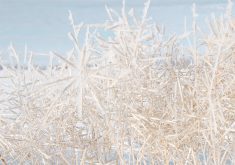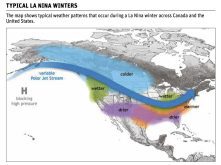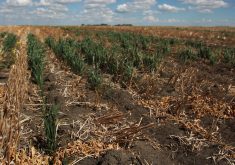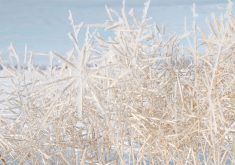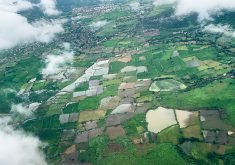AccuWeather bases prediction on formation of a moderate-to-strong La Nina, which tends to amplify the polar jet stream
Western Canadian farmers should be pulling their parkas out of storage, says a weather forecaster.
“We think this could be one of the colder winters we’ve seen in quite a while,” said AccuWeather meteorologist Brett Anderson.
He is forecasting the chilliest winter since 2013-14. Temperatures are expected to be 1.5 to 2 degrees C below normal, which is a lot.
“That’s certainly a lot colder than it has been in recent years,” he said.
“It’s going to be one of those increasingly rare winters with climate change.”
Read Also

Farmers asked to keep an eye out for space junk
Farmers and landowners east of Saskatoon are asked to watch for possible debris in their fields after the re-entry of a satellite in late September.
The bone-chilling forecast can be blamed on the formation of a moderate to strong La Nina, which tends to amplify the polar jet stream, bringing blasts of cool air into the prairie region.
Skeptics would point out that forecasters were calling for a cold winter last year due to the presence of another La Nina event, but it ended up being mild.
Anderson said this La Nina is stronger and there are other differences, such as below normal water temperatures off Canada’s West Coast, which were above normal last year.
He also looked at the summer and fall 2021 weather analogs for the region and compared them to other similar years. The analysis confirms that the Prairies are heading for a harsh winter.
The dreaded polar vortex could also make an appearance this year. It usually circles the North Pole but could be pushed south into the prairie region by a high pressure system this year.
That is expected to deliver at least three blasts of below -30 C weather to the region.
MarketsFarm analyst Bruce Burnett has a similar temperature forecast for the Prairies. He believes it will be colder than normal, particularly in Manitoba and eastern Saskatchewan.
“This is exactly the opposite of last year,” he said during an Ag In Motion virtual event.
“Last year was an atypical La Nina in terms of conditions.”
He believes there will be normal to above-normal snowfall this winter across the prairie region, which would be welcome.
“In many areas of the Prairies we’re desperately short of soil moisture,” said Burnett.
Rainfall in the April 1 to Oct. 18 period was 75 to 150 millimetres below normal for some regions.
The only areas that received normal precipitation during that period were south of Regina, the southern Peace River region and scattered pockets throughout Manitoba.
Anderson’s forecast differs from Burnett’s on the precipitation side of things. He anticipates near to slightly below normal snowfall for the prairie region.
“With the cold it’s just hard to get above normal precipitation,” he said.
He also expects the coldest areas will be in the west in Alberta and Saskatchewan, which is the opposite of Burnett’s forecast.






